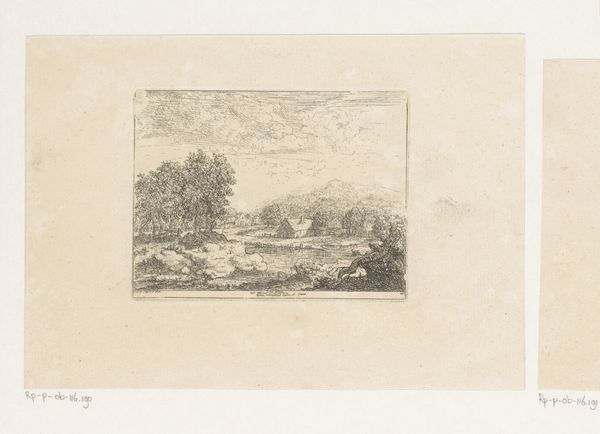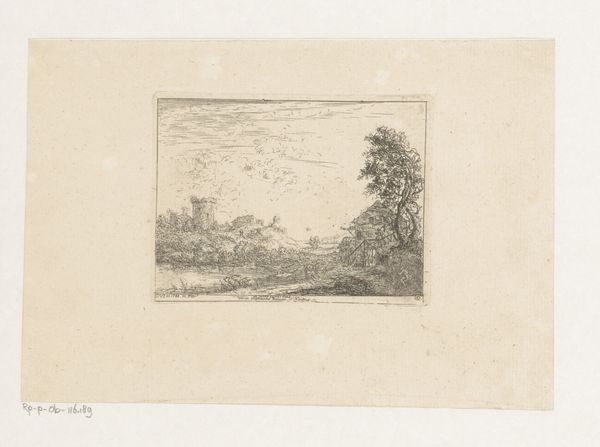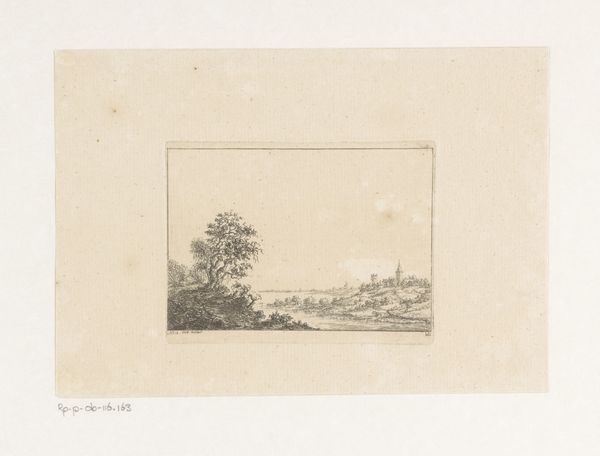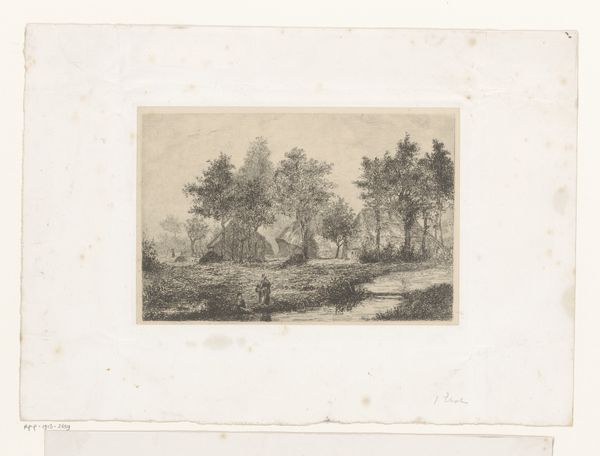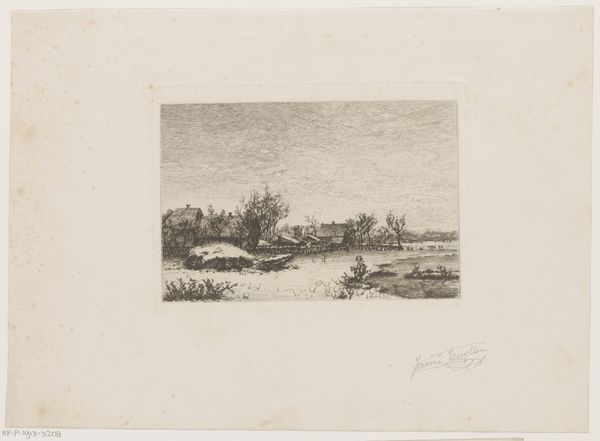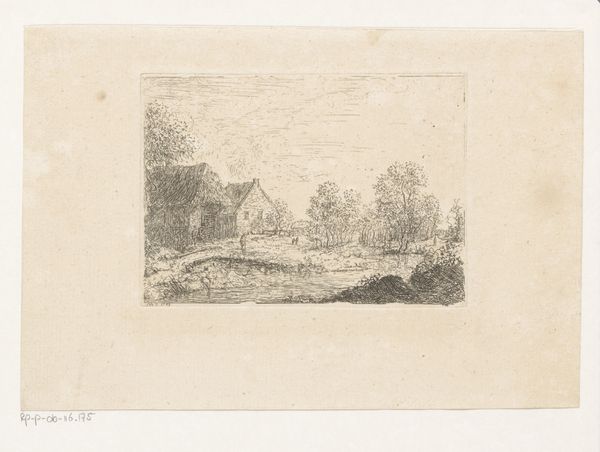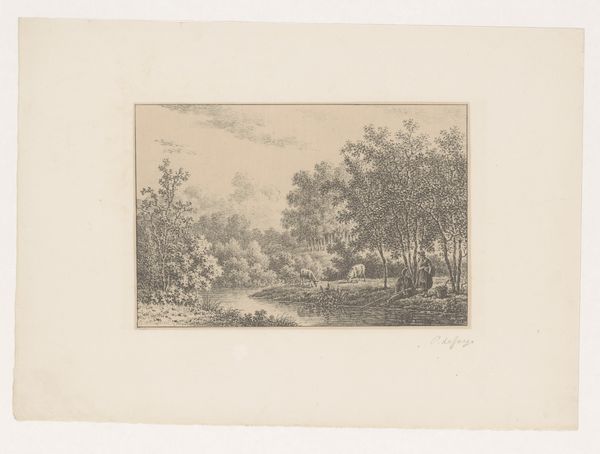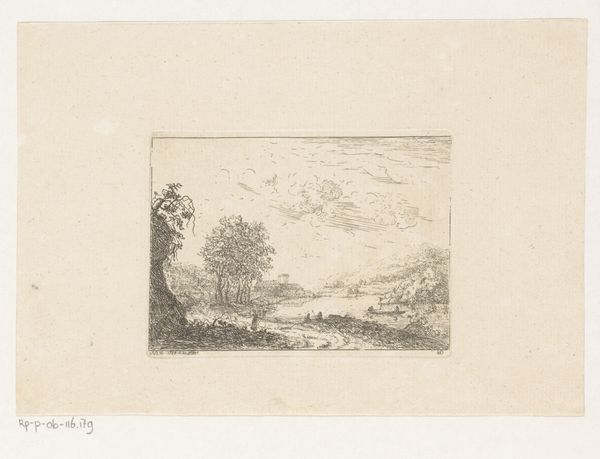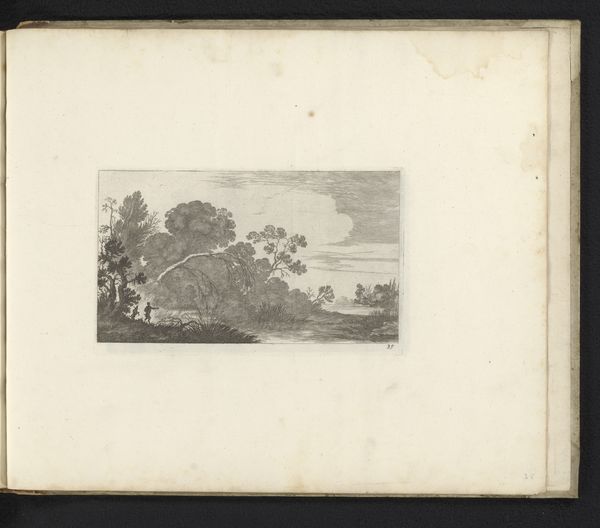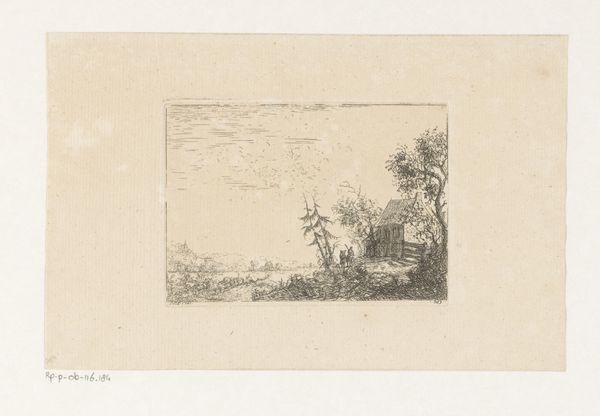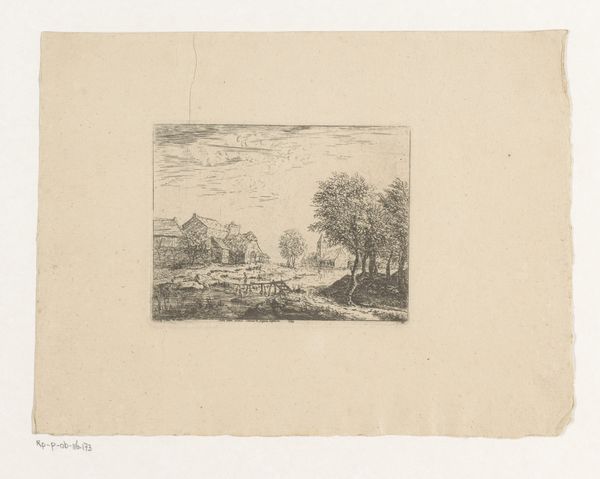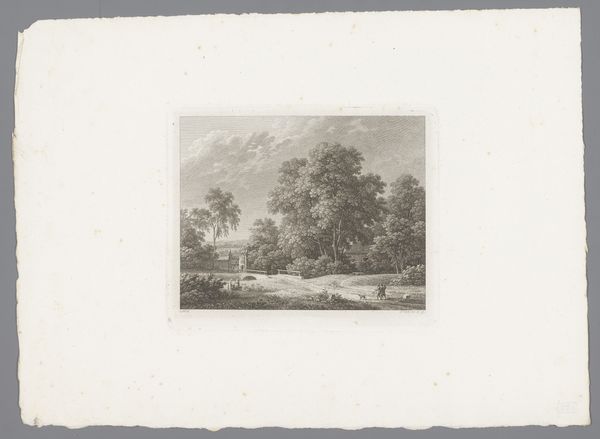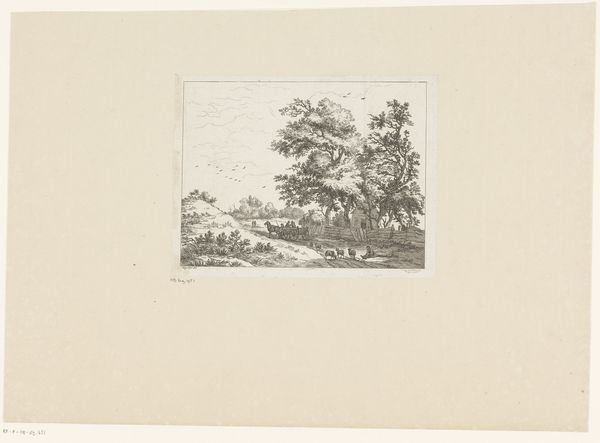
drawing, etching, paper
#
drawing
#
baroque
#
etching
#
pencil sketch
#
landscape
#
paper
Dimensions: height 86 mm, width 112 mm
Copyright: Rijks Museum: Open Domain
Curator: Welcome. Here we have "Landscape with River", a delicate etching possibly created around 1744 by Christian Ludwig von Hagedorn, part of the Rijksmuseum's collection. Editor: Immediately, the sense of fleeting light and gentle stillness strikes me. The etching has such fine, almost wispy lines – it’s as if the landscape itself is a memory fading in and out of clarity. Curator: Note how Hagedorn, primarily known as an art theorist and collector, employed etching—a printmaking technique—to render this tranquil waterside scene. The material processes themselves are part of the social context of artistic production, especially considering Hagedorn’s prominent position. Editor: Yes, it makes you wonder about his access to materials, his relationship with workshops and printing presses of the time. But looking at the image itself, it feels very personal, intimate, not something churned out on a production line. It almost whispers. Curator: Consider that paper was increasingly available, though not universally so, affecting the proliferation of such images and their consumption by a growing art market. The lines evoke a feeling of precision—perhaps Hagedorn was deeply interested in capturing detail accurately, almost scientifically. Editor: Scientifically, maybe, but it also feels like a dream. The way the trees sort of dissolve into the sky, that distant bank barely visible through the mist…there’s a real atmospheric perspective at play here, a longing for something beyond the immediately visible. It makes me wonder what Hagedorn himself was longing for. Curator: Perhaps this landscape acted as a form of escapism for Hagedorn, a retreat from his theoretical work into something more grounded. It reflects the socio-economic drive towards landscape imagery which represented idealized ownership of the natural world. Editor: True, the very act of depicting the landscape transforms it, almost colonizes it through vision. And there is a lovely irony in seeing an etching like this—ostensibly reproducible—and yet feeling it radiate a single, unrepeatable moment. Well, for all of the labor and technical constraints of 18th century etching, it really offers something uniquely peaceful. Curator: Precisely, it opens to reveal its connection with and independence from all of the historical pressures involved.
Comments
No comments
Be the first to comment and join the conversation on the ultimate creative platform.
